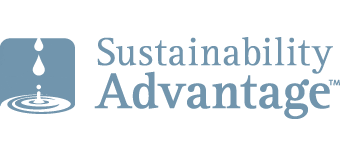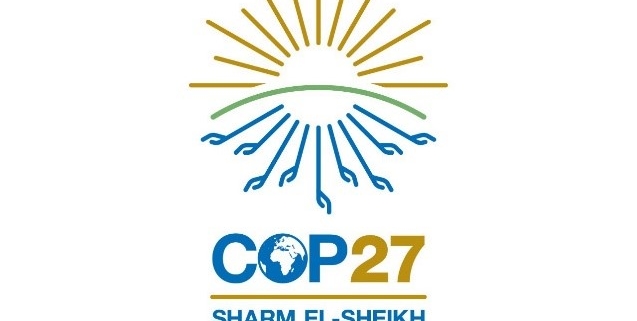7 Benefits to Any COP Government of Net-Zero Procurement

(For a quick refresher on Net-Zero Procurement, see the previous blog, “3 Superpowers of Net-Zero Procurement.”)
In 1994, 198 national governments signed the United Nations Framework Convention on Climate Change (UNFCCC). It is a treaty to combat “dangerous human interference with the climate system” and stabilize greenhouse gas (GHG) concentrations in the atmosphere. Ever since, at each annual Conference of the Parties (COP), these governments / parties have renewed their commitments to stabilizing climate change. COP27 will be held in Egypt, November 6-18. The parties will sign a statement at the conclusion agreeing on their actions. Here are the seven benefits to any COP government of Net-Zero Procurement (N-ZP), that support its inclusion as an action item in COP27’s closing agreement:
1. N-ZP enables governments’ COP27 pledges to be met.
Governments bring their Nationally Determined Contributions (NDCs) – their pledges to reduce their countries’ greenhouse gases (GHGs) – to each COP meeting. However, their pledges have never been enough to limit global warming to 1.5˚C above pre-industrial levels by 2050, as the Intergovernmental Panel on Climate Change (IPCC) has warned that we must do. For example, the combined NDC pledges brought to COP26 in Glasgow last November would only limit global warming to 2.1˚C by 2100. If governments are to live up to their COP GHG reduction pledges, they must encourage businesses to also commit to science-based net-zero GHG targets. N-ZP does that. It gives preferential treatment to suppliers that commit to net-zero targets.
2. N-ZP is the most effective way to mobilize the business community in the race to net-zero.
Governments have been unsuccessful in engaging businesses in the transition from fossil fuels to renewables. Most businesses are sitting on the sidelines waiting for governments to fix climate change for them. Only 20% of large companies, 5% of medium-size companies, and 2% of small companies have any GHG reduction targets. However, given the disappointing track record of countries’ on meeting their NDC pledges, it is clear that governments can’t stabilize the climate by themselves. They must engage companies in their efforts to decarbonize their economies. Governments can use Net-Zero Procurement as the most effective way to mobilize businesses in the race to net-zero GHGs, voluntarily.
3. N-ZP allows the government to act as a customer vs. as a regulator.
All governments are understandably hesitant to introduce regulations mandating that businesses disclose their GHG performance, their net-zero targets, and their GHG reduction plans. Such regulations would be challenging to enforce; they could raise jurisdictional issues; any penalties for non-compliance could be contested; any new “mandate” would be politically challenging; and there is little downside for companies’ poor performance. It is doubtful that regulations would stimulate the required action by the businesses to meet science-based net-zero GHG emission reduction targets. Regulations are problematic.
A government can avoid all this hassle and uncertainty by using its buying power as a market force. That is, it can act as a customer instead of as a regulator. In Canada, the federal government’s buying power is $22 billion a year. An incentive for suppliers to disclose their net-zero scores is that they would qualify to be a government supplier and could tap into that revenue stream. Another incentive is that their scores are weighted heavily enough to matter (e.g., 10-30%) in the bid appraisal process, giving them preferential treatment if their scores are better than their competitors. If a supplier doesn’t want to disclose their progress on net-zero targets, they don’t have to. It’s voluntary, with the clear understanding that not completing the net-zero assessment disqualifies the company from being a government supplier. That’s the supplier’s choice.
4. Net-Zero Procurement is low-cost and quick to implement.
There are three key components of an N-ZP system: a disclosure tool, a bid appraisal tool, and special contractual conditions. The disclosure tool could be based on the freely available, open-source, short, small company-friendly Net-Zero Assessment Tool (N-ZAT). The bid appraisal tool that favors suppliers most committed to net-zero could be based on the free, open-source Net-Zero Procurement Bid Appraisal Template. The contractual conditions stipulated in contracts with winning suppliers could build on normal contractual conditions. For example, the contracts could stipulate penalties / bonuses re completion of the supplier’s short-term action plans, require suppliers to publicly communicate their net-zero plans, and/ or require CEO compensation be linked to meeting their short-term net-zero targets. We don’t have to create N-ZP tools. We already have them and they can be readily integrated into current procurement processes.
5. Net-zero disclosures can be used as a diagnostic
If most suppliers score low in a particular area on the net-zero disclosure questionnaire, there may be targeted resources / policies / funding that governments can provide to help all businesses accelerate their net-zero journeys. The effectiveness of the government’s assistance can then be assessed by monitoring suppliers’ net-zero disclosure scores after the program to see if they improve. This reinforces the kind of customer-supplier collaboration that leads to relationships and innovations that benefit all parties.
6. Net-Zero Procurement is readily scalable to provinces / states, municipalities
The buying power of a national government is significant. For example, in Canada the federal government purchases over $22 billion of goods and services annually. Adding in purchases by provincial, territorial, and municipal governments, the Canadian public sector has a combined buying power of over $200 billion. To capitalize on that larger market force, the federal government can readily package its N-ZP system and share it with provincial and municipal governments.
If lower-level governments are hesitant to follow the national government’s lead, it might consider using an “N-ZP conditional funding” approach. All national governments flow funds to lower-level governments. Given the climate emergency, N-ZP conditional funding could be used to incentivize recipients of any federal funds – it doesn’t matter what kind of funding or for what purposes – to commit to implementing N-ZP within the next year. If they do not make that commitment, they do not receive the funding. This does not cost the national government anything – the funds were already allocated. If speed and scale are priorities, N-ZP conditional funding may be an attractive option for national governments.
7. Net-Zero Procurement is readily scalable to other COP countries
Any national government that implements N-ZP could also share its system with other COP member countries. Why is this important? Canada’s share of global GHG emissions is just 1.5%. Even if all levels of government in Canada used N-ZP to help reach their net-zero targets, the impact would be small. Climate change is a global issue. We need all 198 COP member governments to use N-ZP. The World Bank estimates that global public procurement represents 13% to 20% of GDP. If all countries used N-ZP, that would unleash $9.5 trillion USD of global public procurement market force, annually, to mobilize the global business community in the race to net-zero. From $22 billion (national), to $200 billion (provinces and municipalities), to $9.5 trillion (all countries) of market force – that’s some multiplier effect!
The world is in a climate emergency – “a code red for humanity” according to the UN Secretary-General. That is not acceptable. It’s time to engage the resources, ingenuity, and leadership of business community in fixing this crisis. Including Net-Zero Procurement as an action item in the COP27 closing agreement would be the most effective way to make that happen.
Please feel free to add your comments and questions using the “Leave a reply” comment box under the “Share this entry” social media symbols, below. For email subscribers, please click here to visit my site and provide feedback.




